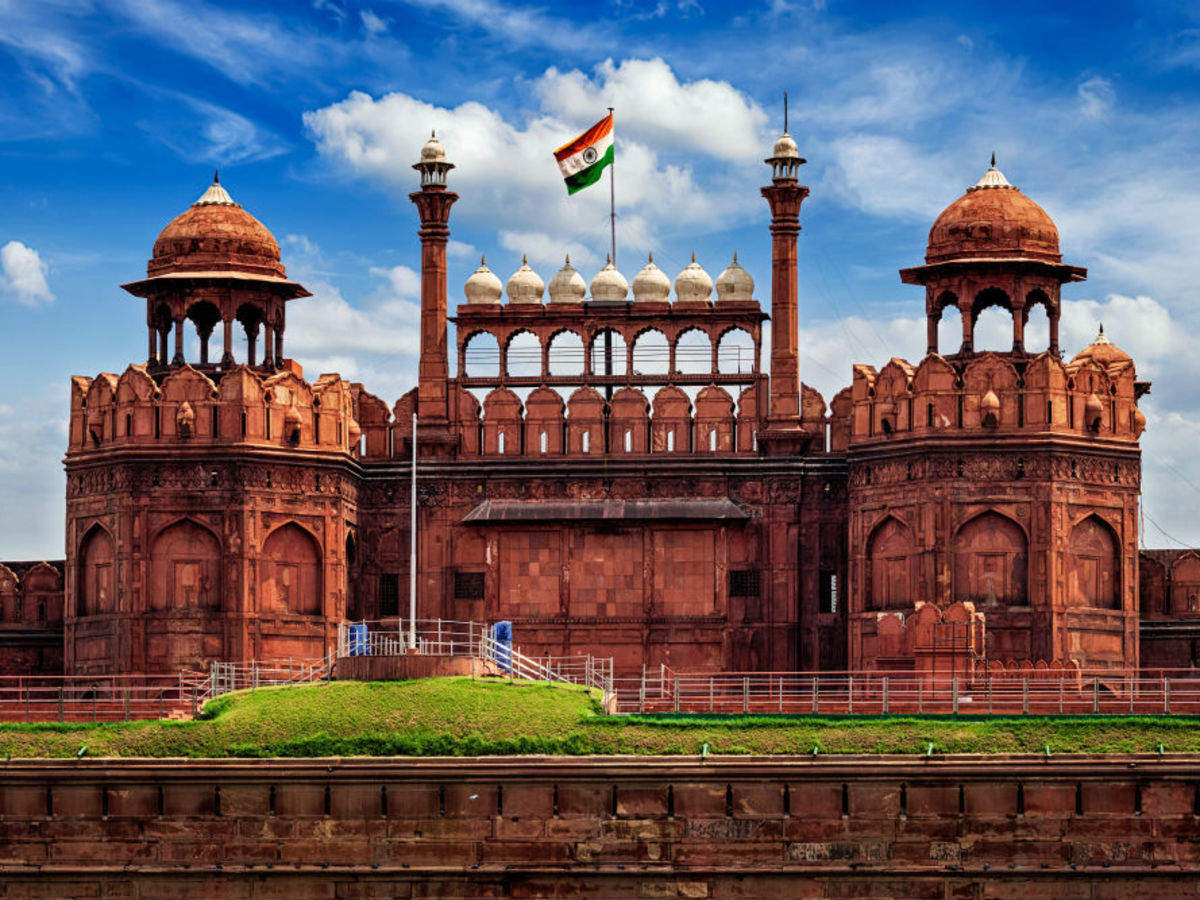- Every year on August 15, India celebrates its Independence Day by flying the national flag at Delhi’s famed Red Fort.
- This ancient tradition, established by Prime Minister Jawaharlal Nehru, is crucial in India’s road towards self-government and independence from colonial domination.

Concerning Red Fort
- The Red Fort, also known as “Lal Qila” in Hindi, was built during the reign of Mughal Emperor Shah Jahan. Its construction started in 1638 and was finished in 1648. It was intended to be the Mughal rulers’ principal residence.
- Architectural Wonder: The Red Fort is a Mughal architectural masterpiece, distinguished by its red sandstone walls and rich marble ornamentation. It mixes architectural styles from the Persian, Timurid, and Indian empires.
- UNESCO World Heritage Site: In 2007, the Red Fort was named a UNESCO World Heritage Site. It is renowned for its historical and cultural value, as well as its outstanding architectural design.
- The Red Fort is a gigantic edifice with walls that stretch over 2 kilometres. It is shaped like an irregular octagon and has two main entrances: the Lahore Gate and the Delhi Gate.
- Diwan-i-Aam and Diwan-i-Khas: The complex contains the Diwan-i-Aam (Public Audience Hall) and the Diwan-i-Khas (Private Audience Hall). The former was allocated for public addresses, while the latter was for private gatherings and debates.
- Mumtaz Mahal: Within the complex is a white marble monument known as Mumtaz Mahal, which is frequently confused with the Taj Mahal. Mumtaz Mahal, Shah Jahan’s wife, is buried here.
The Historical Importance of the Red Fort
- Delhi Sultanate and Mughal Era: During the Delhi Sultanate and Mughal era, Delhi rose to prominence as an important capital city. The beautiful Red Fort became synonymous with the seat of authority, and the Mughals built their dominion from there.
- The Mughal monarchs’ association with Delhi provided them with symbolic legitimacy even as their actual authority faded. Despite their declining influence, they were still seen as India’s legitimate rulers.
- The Rebellion of 1857 enhanced the Red Fort’s symbolic significance even more. The rebels gathered around the elderly Mughal Emperor Bahadur Shah Zafar, emphasising the fort’s significance as a focal point for indigenous authority.
The Influence of British Imperialism
- British Rule and the Red Fort: Following the suppression of the 1857 Rebellion, the British preserved the Red Fort but deprived it of its magnificence. They turned the fort into a British garrison, eliminating its Mughal past.
- Symbolism: Despite downplaying Delhi’s importance, the British recognised its symbolic significance. The Delhi Durbars, as well as the decision to relocate the capital from Calcutta to Delhi, emphasised the city’s significance and authority.
The Red Fort and India’s Independence Struggle
- INA Trials: The Red Fort rose to notoriety during the INA trials, in which INA officers were prosecuted for treason. These trials instilled patriotism and built the Red Fort as a symbol of resistance to British authority.
- As India neared independence, Nehru’s decision to hoist the national flag at the Red Fort in 1947 symbolised the liberation of this historical place from British colonial power. It was the culmination of India’s struggle for independence and the assertion of its sovereignty.
Key events
- INA Trials: In the mid-1940s, the Red Fort played an important part in the trials of Indian National Army (INA) officers. The trials sparked nationalist feelings and elevated the location to the status of a symbol of resistance to British rule.
- Jawaharlal Nehru’s decision to wave the national flag from the Red Fort on August 15, 1947, heralded the site’s liberation from colonial domination and India’s independence as an independent republic.
Annual Observance and Symbolism
- Keeping the custom Alive: The custom of flying the national flag and delivering the Independence Day message from the Red Fort is still going on today.
- Identity Reclamation: The Red Fort’s annual celebrations highlight the triumph of India’s struggle for independence and the reclaiming of its cultural and historical identity from colonial oppression.
Source: https://indianexpress.com/article/explained/explained-history/red-fort-venue-for-pms-independence-day-speech-8892626/#:~:text=Causing%20an%20outpouring%20of%20sympathy,Fort%20in%201947%20makes%20sense.
